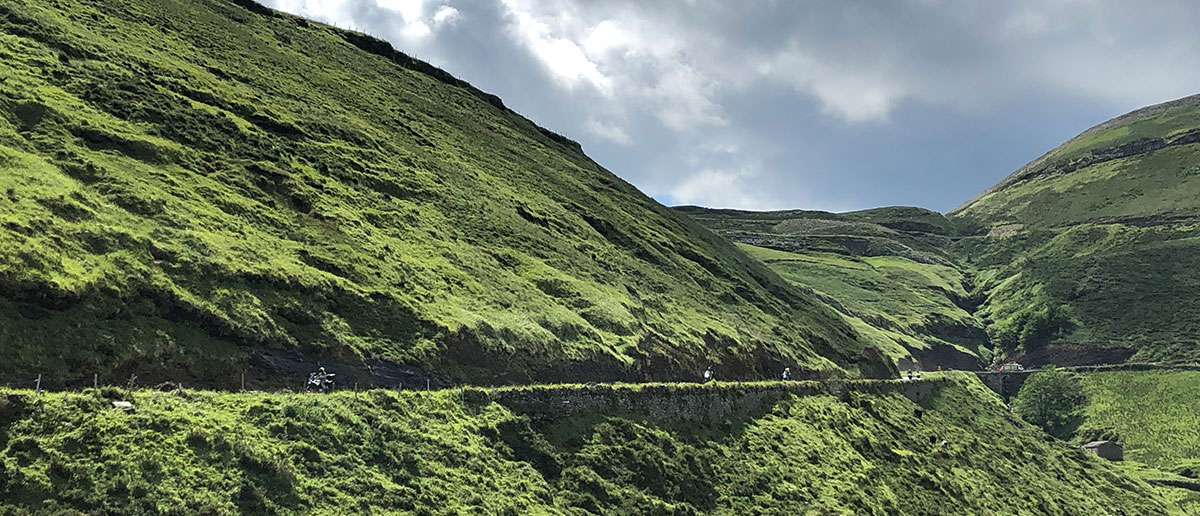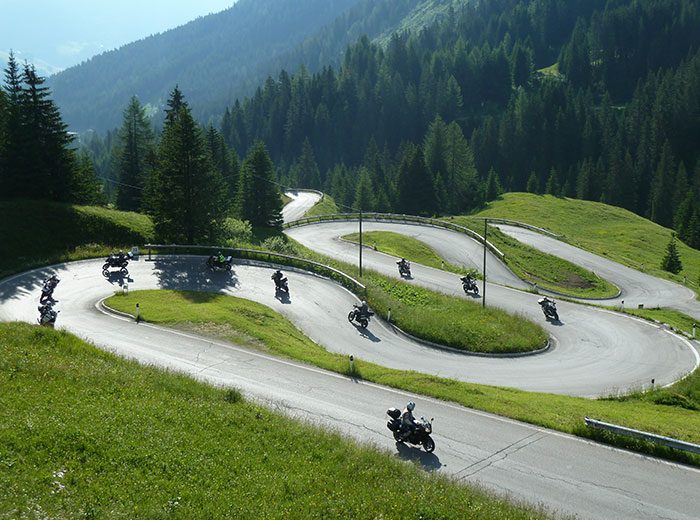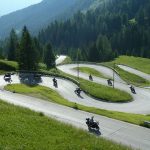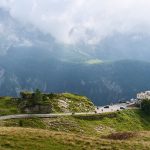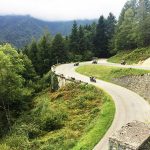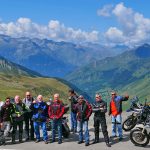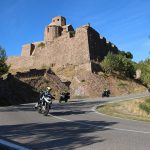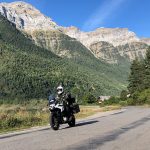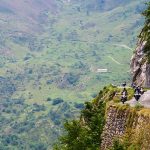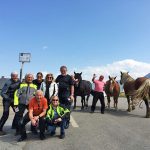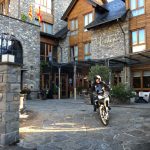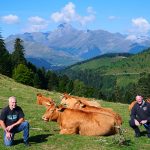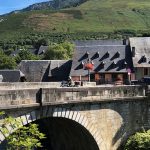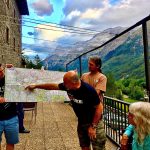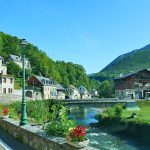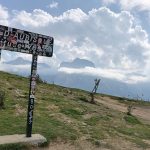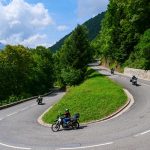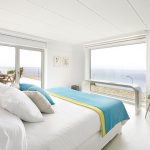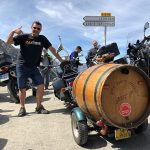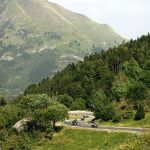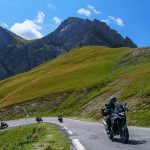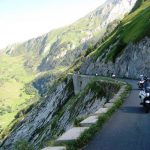Northern Spain & Pyrenees Motorcycle Tours
Northern Spain is one of the areas with the most cultural, landscape, and even climatological diversity in the entire Iberian Peninsula. Boasting a human presence for 10,000 years, the vestiges of other times remain palpable today. Traveling by motorcycle on the roads of northern Spain is undoubtedly one of the best ways to get to know and experience all that this part of the world has to offer– both geographically and historically.
Here are the most important mountain ranges of the Spanish territory: the Pyrenees, running along the border with France, and the Picos de Europa on the Cantabrian coast. The coastline itself is also remarkable, with a small but wild section in the Mediterranean, and a more extensive coast along the Cantabrian Sea and the Atlantic Ocean in Galicia.
The different civilizations that have inhabited the north of Spain have left their mark throughout the country. Their legacy is still visible in the richness and variety of the architecture, culture and cuisine, as well as in several languages and dialects still used in their original form to this day, along with others that have practically died out.
Some of the most appreciated treasures left to us, especially by lovers of motorcycle travel, are undoubtedly the enormous number of existing roads. Many of the routes we use today were created thanks to the passage of nomadic tribes, travelers, and shepherds over the centuries. There are also many old Roman roads. In both cases, they are paradise to travel on a motorcycle.
The north of Spain has innumerable attributes, among which we must certainly count its famous and varied gastronomy, rich folklore, and charismatic inhabitants. These qualities have made it one of the most sought-after destinations for motorcycle travelers from all over Spain, as well as from other European countries. Although it can rain on occasion, it has a mild climate and is a joy to travel by motorcycle for most of the year.
At IMTBIKE, we have extensive experience organizing guided motorcycle tours in northern Spain. We offer 3 different routes here, and the roads, accommodations, and destinations in each are carefully selected so that those who travel with us by motorcycle through the north of Spain enjoy the best possible experience in this amazing region.
Tours in Northern Spain & Pyrenees Motorcycle Tours
-
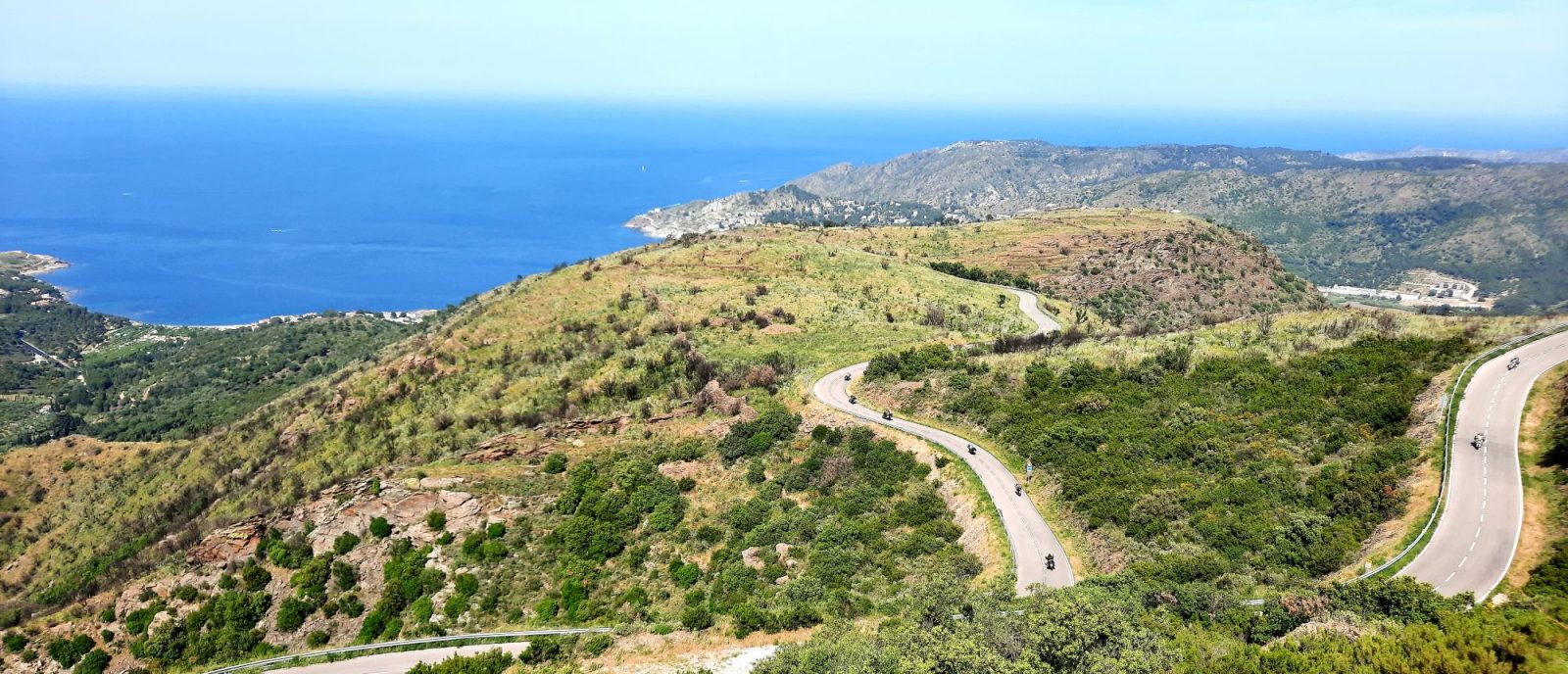 Costa Brava Catalunya Motorcycle Tour Coast, mountains and curves
Costa Brava Catalunya Motorcycle Tour Coast, mountains and curves
From: € 5025
Start / End Barcelona
Dates: May. 11 — May. 21, 2026
-
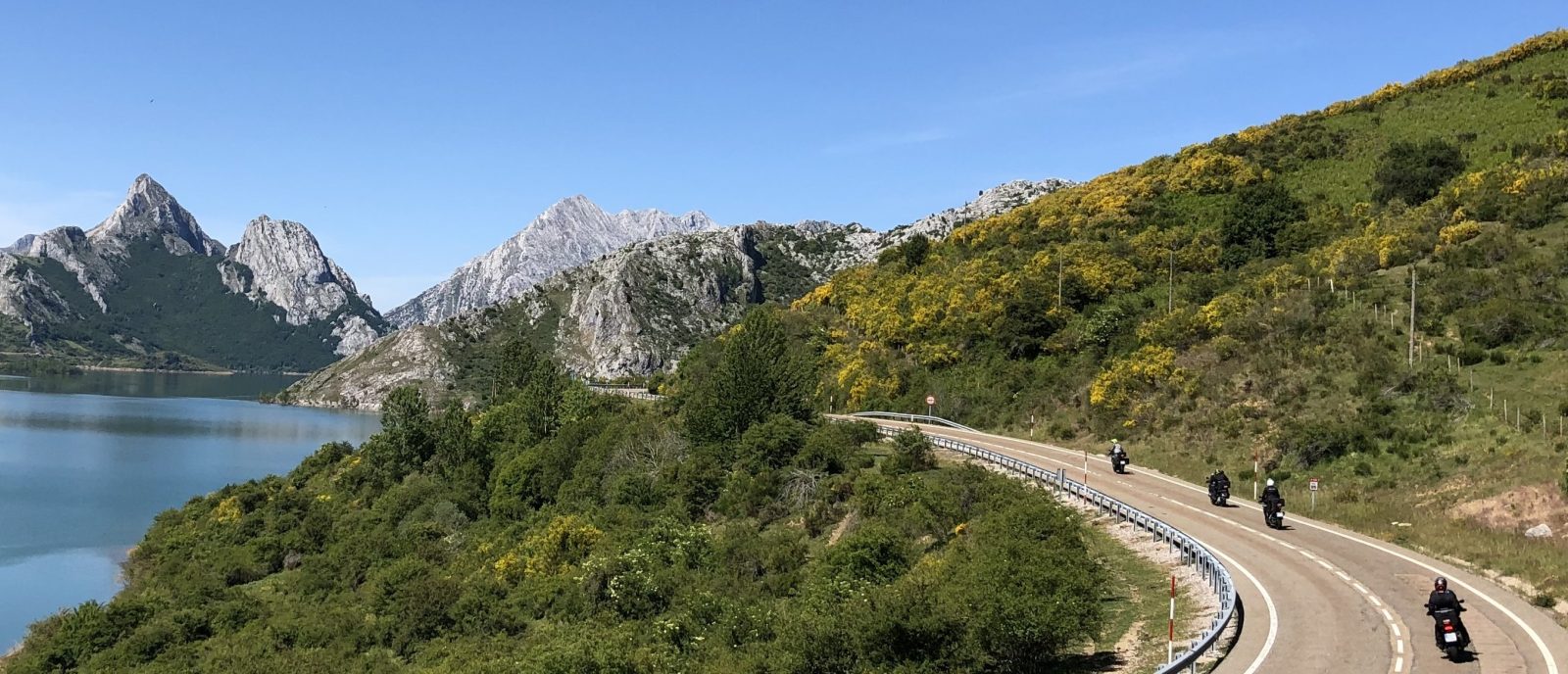 Northern Green Spain Motorcycle Tour Discover the elegance of Northern Spain
Northern Green Spain Motorcycle Tour Discover the elegance of Northern Spain
From: € 7855
Start / End Bilbao
Dates: May. 28 — Jun. 12, 2026
-
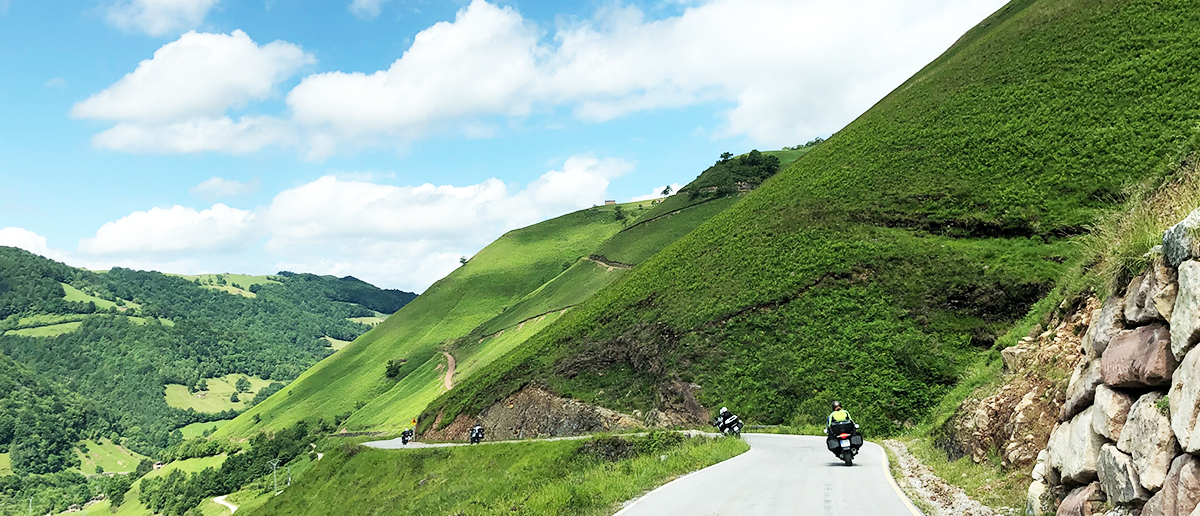 Essence of Northern Spain Tour Mountains next to the sea
Essence of Northern Spain Tour Mountains next to the sea
From: € 4240
Start / End Bilbao
Dates: Jun. 28 — Jul. 06, 2025
Sep. 06 — Sep. 14, 2025
Jul. 04 — Jul. 12, 2026
-
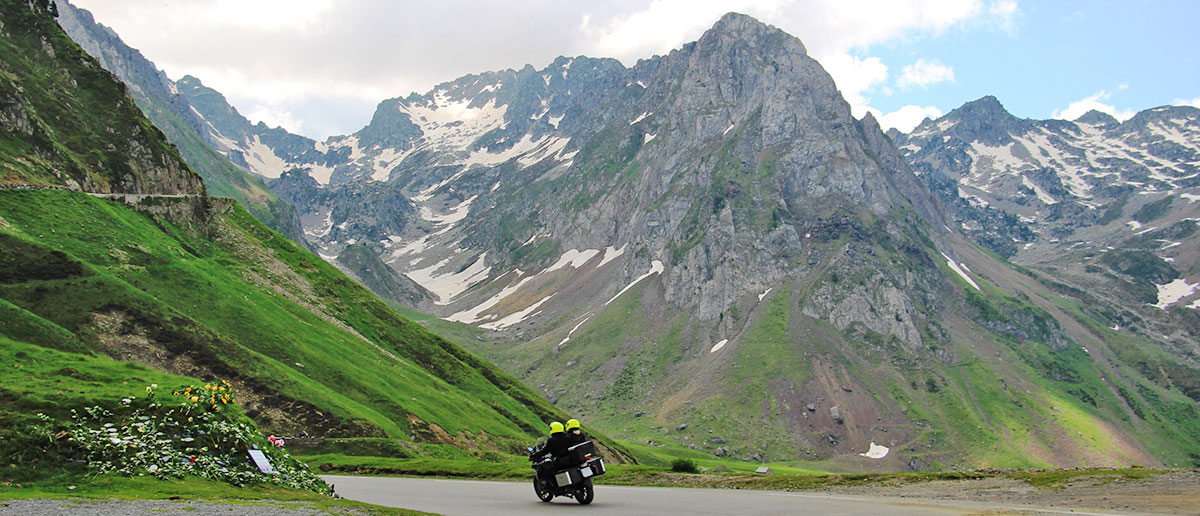 The Great Northern Discovery Motorcycle Tour Complete Northern Spain from Barcelona to Santiago de Compostela
The Great Northern Discovery Motorcycle Tour Complete Northern Spain from Barcelona to Santiago de Compostela
From: € 11740
Start / End Barcelona
Dates: Jan. 04 — Jan. 08, 2100
-
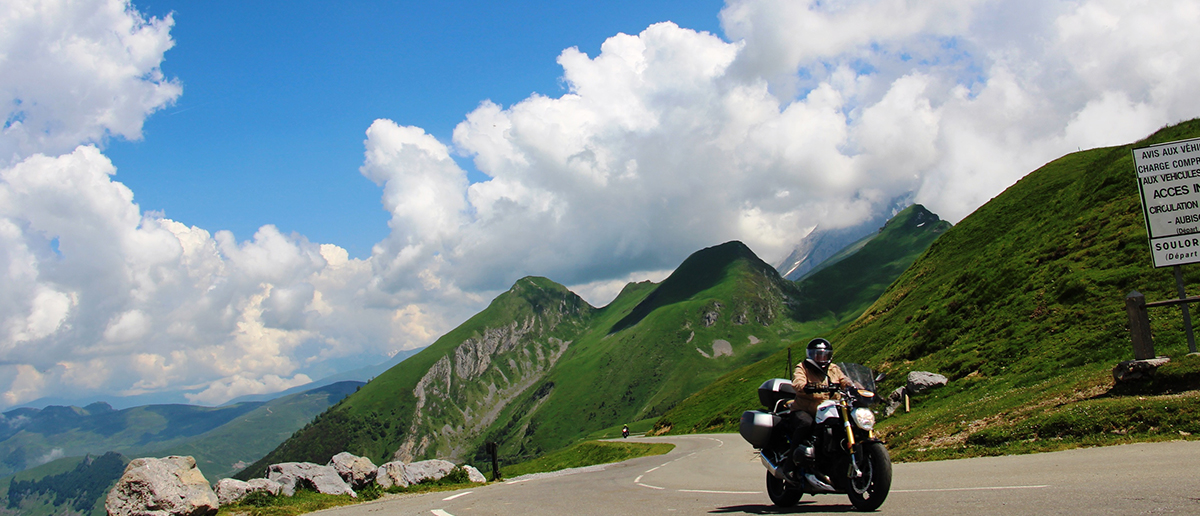 Pyrenees Coast to Coast Motorcycle Tour From Barcelona to San Sebastian
Pyrenees Coast to Coast Motorcycle Tour From Barcelona to San Sebastian
From: € 5525
Start / End Barcelona
Dates: Jun. 24 — Jul. 05, 2025
Jul. 14 — Jul. 25, 2025
Jun. 23 — Jul. 04, 2026
-
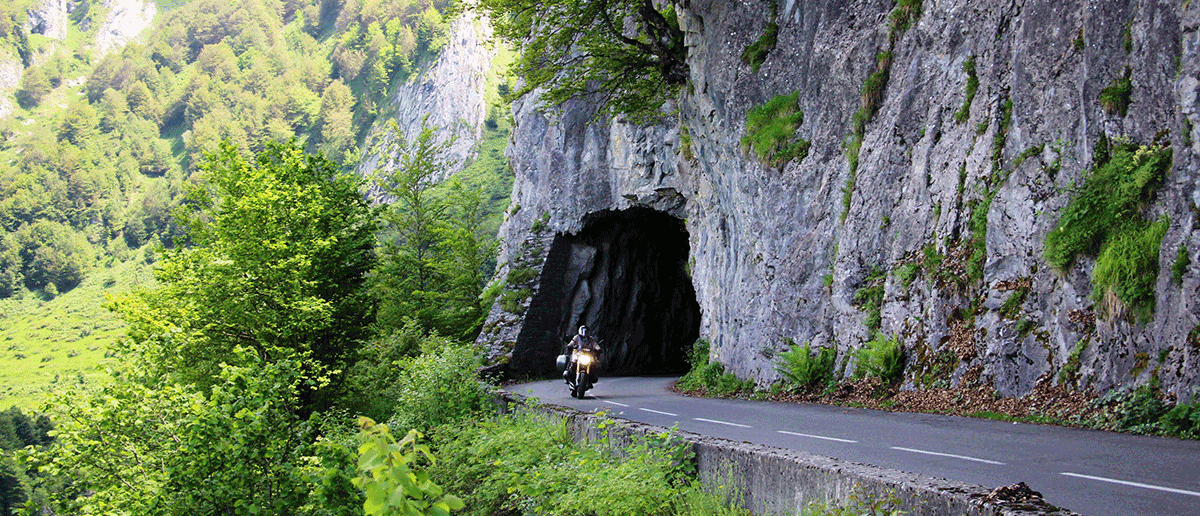 Perfect Pyrenees Motorcycle Tour The Soul of the Pyrenees
Perfect Pyrenees Motorcycle Tour The Soul of the Pyrenees
From: € 3530
Start / End Barcelona
Dates: Aug. 02 — Aug. 09, 2025
Aug. 30 — Sep. 06, 2025
Jun. 06 — Jun. 13, 2026
Northern Spain & Pyrenees Motorcycle Tours FAQ
What should I take into account when organizing a motorcycle trip in the north of Spain?
Is Northern Spain too cold to travel on a motorcycle?
How do I prepare my motorcycle route through the north of Spain?
What is the state of the roads in northern Spain when traveling by motorcycle?
Is the French side of the Pyrenees interesting if I travel by motorcycle in the north of Spain?
Does the Tour de France affect Spanish roads on a motorcycle trip through northern Spain?
What cities should I visit on a motorcycle trip in northern Spain?
What natural attractions should I not miss on a motorcycle trip through northern Spain?
What are the best motorcycle roads in northern Spain?
To name just a few of the most spectacular:
- The N-260, in its section between Ribes de Freser and Puigcerdà--also known as Collada de Toses. Located in La Cerdanya in the Eastern Pyrenees, it has 55km of curves, spectacular views, and good asphalt. It is very popular with local riders with all kinds of motorcycles.
- The C-28, better known as Port de la Bonaigua, between Esterri d’Àneu and Vielha, gives us access to the Val d’Aran and its steep drop. Its famous 180º curves at the highest part with its incredible high mountain landscape will inspire us to keep our cameras at the ready! Its summit exceeds 2,000m above sea level, resulting in one of the most famous ski areas in Spain: Baqueira Beret.
- At the westernmost end of the Pyrenees, already in Basque lands, we find the GI-3440. This small road connects Hondarribia with San Sebastián. At 20km, it is a jewel worthy of being enjoyed by motorcycle. It passes through Mount Jaizkibel, with cliffs and views of the sea accompanying us for much of the journey.
- Between Ondarroa and Lekeitio, also in the Basque Country, we find another gem: the BI-3438. This route faithfully hugs the rugged coastline, where we enjoy lush forest and impressive cliffs in equal measure.
- The AS-260 in Asturias, commonly known as the Mirador del Fito. This road is home to numerous rallies and hill climbs thanks to its perfect layout for these motorsport endeavors. This should give you an idea as to how twisted this route is. Straddling the Costa Verde and the Picos de Europa, it quickly ascends to a significant height considering how close it is to the coast--a characteristic which gives us exceptional views from its summit.
